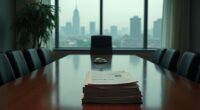The beauty industry teems with excitement for refillable products—93% of consumers are on board! But only a shy 10% actually take the plunge. Why? Convenience issues and hygiene worries play a big role, like searching for a Wi-Fi signal in a black hole. Accessing refill stations feels like finding Waldo at a crowded beach. Yet, brands like Fenty Beauty are paving the way for change. Curious why the refill revolution isn’t sweeping everyone off their feet? There’s more to uncover!
The Paradox of Refillable Beauty
In a world where eco-consciousness is the new black, refillable beauty products are stepping into the spotlight, proving that sustainability can indeed be stylish. As consumers navigate the dizzying array of beauty products, the allure of refillables grows stronger—yet only a fraction of enthusiasts actually follow through. A striking 93% express interest in refillable beauty, but only about 10% make the leap. What gives?
The answer lies in a cocktail of convenience, skepticism, and education. While nearly 67% of consumers find refillable packaging important, concerns about hygiene during refilling plague about 31% of potential users. It’s like being invited to a potluck dinner but worrying whether your neighbor’s famous casserole is actually edible.
Convenience, skepticism, and education shape refillable beauty’s journey—hygiene concerns linger like an unwelcome potluck dish.
Furthermore, the difficulty of accessing refill stations, with over half of consumers facing challenges, feels akin to trying to find a needle in a haystack—if that needle were a refill station located in a different city. Innovative packaging solutions like biodegradable, recyclable, and upcycled materials are emerging to address these concerns and enhance the refillable experience. Additionally, the beauty industry produced over 120 billion units of cosmetic packaging in 2018, highlighting the urgency for sustainable practices.
On the brighter side, refillable beauty products offer a treasure trove of benefits. They reduce waste and lessen dependence on new materials, effectively contributing to the circular economy—think of it as recycling, but with a chic twist. Adopting conscious consumption habits leads to significantly less environmental impact over time.
Brands like Fenty Beauty and Dior are cashing in on this trend, positioning themselves as not just purveyors of beauty, but champions of sustainability. They entice consumers with discounts for returning packaging, like a clever loyalty program that rewards good behavior. Yet, the initial costs and logistical challenges can deter brands from fully embracing this packaging revolution.
Consumer behavior also plays a crucial role; simplicity is king. If the refill process resembles solving a Rubik’s Cube, many will pass. But when these systems are streamlined, and savings are clear, the excitement for refillables can reach a fever pitch.
Social media, with its millions of views on refillable beauty, amplifies this shift, making it easier for consumers to envision a greener future—one chic refill at a time.









